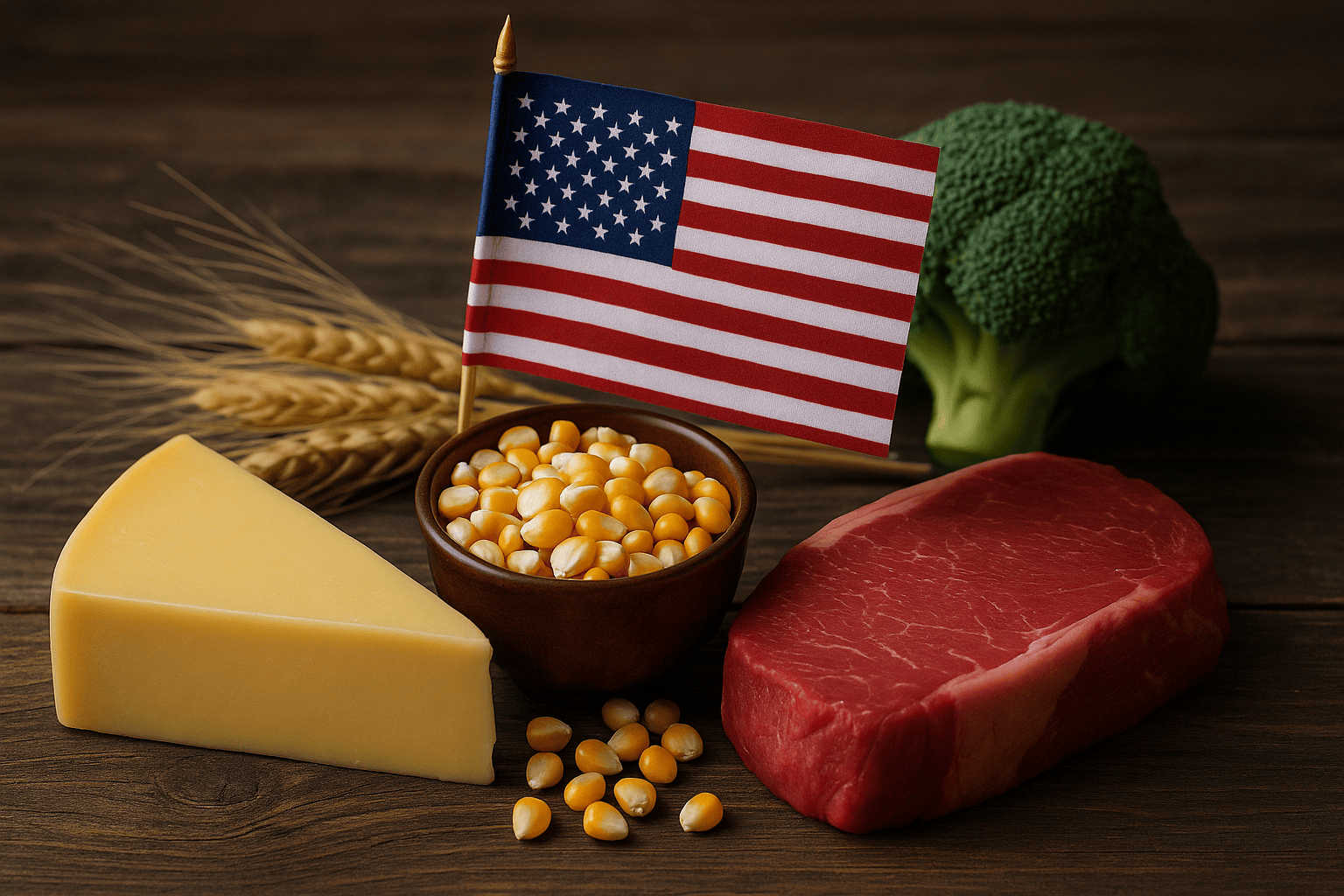Updated: 12.01 CET, July 31 2025 (for India and Canada)
US President Donald Trump is set to implement taxes as high as 50% on agricultural imports from some countries like Brazil, unless deals can be negotiated before August 1. He has also floated plans for a worldwide “blanket” tax that could see 15% to 20% tariffs on all imports to the US.
We keep track of some of the biggest exporters to the US, the current status of negotiations, and key agri-commodities that you should watch as deadline day looms.
EU
Status: Trade deal reached, with further clarity required
Key commodities: Wine, spirits, essential oils, specialty cheeses, olive oil, butter, dairy fat
Earlier this week, after negotiations in Scotland, the EU and the US struck what was billed as the largest trade deal in history. Although no written agreement exists, EU imports to the US are set to receive a 15% tax rather than the proposed 50%.
Depending on the finer details of the agreement, agricultural products like wines, spirits, and essential oils could still be severely impacted by a 15% tax unless “zero-for-zero” tariffs are agreed upon for certain commodities, as Ursula von der Leyen, President of the EU, outlined.
Specifically, olive oil from Spain and butter, dairy, and fat exports to the US from Ireland could be hit. In 2024, according to the Irish Farmers’ Association, Ireland’s agri-food exports to the US were valued at €2 billion, making the US Ireland’s second most important market for agri. Key exports include butter, Kerrygold, Irish casein, and beef.
Von der Leyen shared that zero tariffs will apply to various sectors, including “all aircraft and component parts, certain chemicals, certain generics, semiconductor equipment, certain agricultural products, natural resources, and critical raw materials.” Specific details are still to be outlined.
Indonesia
Status: Deal agreed
Key commodities: Palm oil (crude & refined)
Indonesia will eliminate around 99% of tariff barriers on a full range of US industrial, food, and agricultural products exported to Indonesia. The impact will likely be US businesses gaining greater access to the Indonesian market, opening up more export opportunities, but conversely US products would also compete at premium prices in Indonesia.
The US will reduce to 19% the reciprocal tariffs, outlined in the April wave of tariff announcements, on originating goods from Indonesia; the initial tax was 32% and later dropped to 19%. It may also identify certain commodities that are not naturally available or domestically produced in the US for a further reduction in the reciprocal tariff rate.
China
Status: Truce extension agreed
Key commodities: Processed fruits and vegetables, garlic, mushrooms, apple juice concentrate
As expected, the US and China have agreed to seek an extension of their 90-day tariff truce, after reported “constructive” talks between the heavyweights. The latest update dampens an escalating trade war between the world’s two biggest economies, which saw tariffs reaching triple digits before a trade truce in May.
Canada
Status: Negotiations ongoing
Key commodities: Meat (especially beef and pork), grains, processed foods, baked goods, animal feed
On the eve of the trade tariffs deadline, Trump stated that it would be “very hard” to make a trade deal with Canada after its Prime Minister, Mark Carney, said he planned to recognize Palestine as a state.
Carney announced on Wednesday that Canada would recognize Palestine as a state if the Palestinian Authority committed to certain conditions, including holding elections.
Earlier in the week, Canada’s Prime Minister had shared that negotiations between the two nations were at an “intense phase.” It’s worth noting that the United States-Mexico-Canada Agreement (USMCA) should already cover and protect agriculture from any taxes.
New Zealand
Status: Negotiations ongoing
Key commodities: Meat, dairy, beverages, spirits, vinegar
New Zealand’s exports to the US in 2024 hit around US$4.4 billion, with meat and meat products making up a significant portion ($2.6 billion). Dairy ($982.9 million), eggs, honey, beverages and other edible products also contributed significantly to these exports.
The country’s Finance Minister, Nicola Willis, has said that “decisions on tariffs are matters for the US administration,” and New Zealand would deal with the situation if it arises. She believes that the New Zealand dollar will provide some buffers if tariffs are implemented, saying that a lower New Zealand dollar will assist the country’s exporters by making exports more competitive.
India
Status: Negotiations ongoing
Key commodities: Rice (basmati), spices, tea, guar gum
Posting on his Truth Social platform, Trump said the US will impose 25% tariffs on Indian imports, “plus an unspecified penalty” for buying Russian oil and weapons.
The measures will take effect on August 1, he added. Trump described India as a friend whose “tariffs are far too high, among the highest in the world.”
Agriculture and dairy have been sticking points in negotiations. India wants to reduce a 26% “reciprocal” tariff imposed by the Trump administration.
However, Indian farmers’ resistance to the US push for greater market access in agriculture and dairy has been a major sticking point in the government’s tariff negotiations. According to the India Brand Equity Foundation, India’s exports to the US in 2024 were approximately US$5.7 billion, representing about 11% of India’s total agricultural exports.
Malaysia
Status: Negotiations ongoing
Key commodities: Palm oil, palm kernel oil
A 25% US import tariff currently applies to Malaysian goods and is slated to take effect on August 1 unless extended talks provide a different outcome.
Brazil
Status: No information on deal
Key commodities: Sugar, coffee, fruit juice (especially orange juice), beef, tobacco
Brazil will be keen to avoid a 50% tariff on imports to the US, but high-level talks have stalled.
This piece was written by Rali Videnova, Market Research Analyst at Vesper and Sade Laja, Writer
Read more tariff trade news
